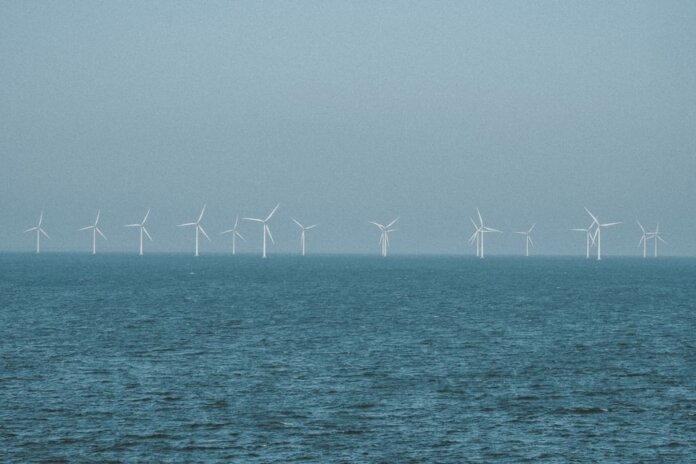The Biden-Harris administration says it is launching coordinated actions to further develop new floating offshore wind projects, with a goal of adding 15 GW of floating offshore wind capacity by 2035.
Through the Energy Earthshot program, the administration will create a new Floating Offshore Wind Shot to accelerate breakthroughs across engineering, manufacturing and other innovation areas. The Floating Offshore Wind Shot will aim to reduce the costs of floating technologies by more than 70% by 2035, to $45/MWh.
The administration says it will also advance lease areas in deep waters in order to achieve the 15 GW goal – which is in addition to the president’s existing goal of deploying 30 GW of offshore wind by 2030 (which will be largely met using fixed-bottom technology).
To support research and development investment goals, the administration launched a new prize competition for floating offshore wind platform technologies; initiatives funded by the Bipartisan Infrastructure Law to develop modeling tools for project design and to analyze port needs; and other funding for research, development and demonstration efforts.
The Floating Offshore Wind Shot is a new initiative to grow clean energy capacity and drive U.S. leadership in floating offshore wind design, development and manufacturing. The Floating Offshore Wind Shot is an initiative led by the Departments of Energy (DOE), Interior (DOI), Commerce and Transportation. DOE and the National Science Foundation will also collaborate on research and workforce development in support of the Floating Offshore Wind Shot.
The Floating Offshore Wind Shot will promote ocean co-use, protect biodiversity and advance environmental justice – including by making sure the benefits of offshore wind deployment reach underserved communities, in support of President Biden’s Justice40 Initiative. This new target is part of DOE’s Energy Earthshots initiative to tackle key remaining technical challenges to reaching U.S. climate goals. In addition to harnessing untapped potential for generating clean electricity, floating offshore wind will also support economy-wide decarbonization, including by using floating offshore wind for co-generation of clean fuels and energy storage.
DOI also announced a new goal to deploy 15 GW of installed floating offshore wind capacity by 2035 – enough energy to power over five million American homes. This builds on the administration’s goal to deploy 30 GW of offshore wind by 2030. DOI’s Bureau of Ocean Energy Management (BOEM) will advance lease areas in deep waters for floating technology, starting with a lease auction off the coast of California by the end of 2022.
DOE also announced a $6.85 million prize competition that challenges competitors to optimize floating platform technologies and work to get them ready for wide-scale domestic manufacturing and commercialization.
DOE announced a $3 million project funded by the Bipartisan Infrastructure Law to develop a set of modeling tools to help industry and researchers design commercial-scale floating offshore wind farm arrays in U.S. waters, including their anchors, mooring lines, and subsea power cables. DOE announced a nearly $1 million project funded by the Bipartisan Infrastructure Law to reduce key infrastructure challenges by outlining a network of West Coast ports and upgrades needed to deploy commercial-scale floating offshore wind.
DOE launched an analysis to review existing transmission studies and identify research gaps related to offshore wind integration in California, Oregon and Washington. This work will help inform future analysis efforts that will aid in transmission planning and buildout.
DOE’s Advanced Research Projects Agency-Energy (ARPA-E) intends to announce $31 million in funding through phase two of its Aerodynamic Turbines, Lighter and Afloat, with Nautical Technologies and Integrated Servo-control (ATLANTIS) program. The ATLANTIS program focuses on novel forms of systems engineering for floating offshore wind systems to drive down costs. This second phase of the ATLANTIS program will focus on experimental testing in ocean, lake, and tank and tunnel environments to further develop new technology for floating offshore wind turbines.
With the Environmental Research Award, DOE and BOEM announced a $1.6 million project to support coexistence of floating offshore wind with bats on the West Coast of the United States. The National Offshore Wind R&D Consortium, a partnership established with funding from DOE and the New York State Energy Research and Development Authority, announced five projects totaling $3.5 million to facilitate ocean area coexistence with marine mammals and fishing and to support offshore wind transmission for both fixed-bottom and floating technologies.
Image: Andrey Sharpilo on Unsplash




